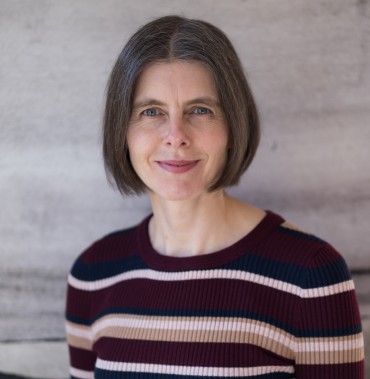Renee Johansen, a supporter of science and forests
What initially drew you to the BMR project manager role?
As project manager, I had the chance to weave together threads from my experience in communications, research in the biological sciences and especially from my background in microbial ecology. I saw this as an opportunity to take my career in a new direction away from doing the research while still staying connected with science and scientists. It was also a great opportunity to contribute to a response to a serious environmental challenge. New Zealand’s forests have always been a source of strength, calm and inspiration for me. Protecting them is vital.
How have you seen the myrtle rust research space change in the last four years?
As people have gotten to know each other, a community has formed and strengthened. I’ve seen an increase in cultural understanding, especially between scientists and iwi/hapū. This is leading to some rewarding and productive partnerships. Some research partnerships can even cross borders. Some of the biggest breakthroughs in myrtle rust research have been facilitated by top-class collaboration between New Zealand and Australian researchers with contributions from people working in multiple institutions. I have found it inspirational how researchers have done their best to break down boundaries and keep work going in the face of a pandemic and funding constraints, by drawing on expertise and resources across two countries. Meanwhile on the ground in NZ, iwi/hapū are also doing the hard mahi to study and protect plants struggling to hang on in our native forests, alongside organisations like DOC and local councils.
What is one key research output that you find particularly promising or interesting?
RNAi – that’s pretty cool new technology. In time, it may prove to be a real-world tool that is better than fungicides. It’s utility in the field is yet to be proven for myrtle rust, but if you’ve got some plants that are particularly vulnerable in a nursery setting but will do okay once you plant them out, RNAi tools may help them survive to get them through to that stage.
The advances in RNAi could also have implications for the management of plant pathogens beyond myrtle rust and even for other fields. Some people are finding RNAi work can help them understand biological mechanisms at a cellular level. That shows this approach is exciting because it enables new paths in basic research as well as the development of new tools.
Tell us about your new role at DOC and what excites you about the role.
The core of my role is establishing and managing research contracts that improve our understanding of carbon stocks in New Zealand’s native ecosystems, particularly in the conservation estate. Hot topics of current interest include the potential impacts of introduced browsers on carbon storage in our forests and whether we might be able to sequester more carbon in a manner that benefits biodiversity using techniques that restore ecosystems. It's really important foundational work to turn the tide for New Zealand’s biodiversity from one of decline to something flourishing and being actively restored at scale. This role enables me to keep building my project management skills and stay connected with science while adding a new layer for me – that of navigating the workings of government and learning how science and policy can best work together. It’s a way for me to advocate for science and learn how to maximise the impact research can have. Also, my values align with those in the Department of Conservation – I think the work the department undertakes is extremely important.